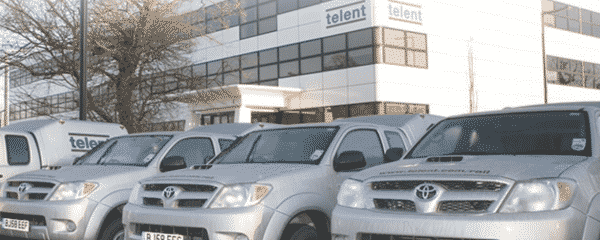-
Encourage more efficient driving.
Tweaking the habits of your drivers can go a long way to reducing your spend on your fleet, both on fuel and maintenance. The Energy Saving Trust estimates 15% savings can be reached by making changes to driving styles.
Reducing speed: First and foremost, slightly reducing the speed your drivers cruise at can make a big difference. 70mpg uses 9% more fuel than 60mph, which translates to significant ££. To make it easier, telematics systems can help you manage this.
Coast more. Most drivers tend to keep pressing the accelerator right up until they need to brake. But there’s never any point in accelerating towards a stop; coasting when you can saves a large amount of fuel and won’t slow the overall journey. It will also save maintenance on the brakes.
Idle less. Leaving the car idling drinks a surprising amount of fuel. If the car isn’t moving, the engine should be turned off. Educating drivers can help with this, as can telematics systems.
For each driver these may seem like trivially small changes, but over a hole fleet it can save an organisation a lot of money.
-
Control fuel costs.
Obviously encouraging drivers to drive efficiently is one of the best ways to cut fuel costs, but there are other options. For example, fuel cards can unlock discounts from major fuel suppliers and can also give you access to reporting tools to give you enhanced visibility over spend.
Another, perhaps obvious, way to cut fuel costs is to reduce the mileage your employees need to drive. Does a meeting really need to be in person, or could it be via video conference or phone? Do employees need to drive separately, or can they car share? These sort of changes are surprisingly overlooked in many organisations.
-
Review your ownership type.
A more radical way to cut costs is to review the ownership model your company uses. Here are some of the most common models and their benefits/drawbacks.
Company car ownership. This is where the business directly owns or leases a car and then offers it to an individual employee. This is great for employees and gives businesses a great deal of control, but it is costly to acquire the vehicles and asset depreciation takes its toll.
Employee car ownership schemes. This is where a company provides company car-like benefits to employees and saves on tax, but requires very strict business/private mileage recording.
Contract hire. This is where all vehicles in a fleet are leased, which makes management easy and maintenance cheaper. This does tie the business into a contract, however.
Grey fleet. This is where the vehicle is owned by the employee, with the company contributing to the cost of business trips. It reduces costs but also reduces the control over the vehicles that the company has.
Pool cars. A designated pool car is available to chosen employees. It means flexibility, but is less exciting for employees and it must be kept on the company premisis overnight.
-
Make the most of technology
The technology available to firms running car fleets has improved immeasurably in the past decade. Telematics systems can provide game-changing insights and reports that can help businesses reduce costs and run fleets far more efficiently.
Real-time insights can help a firm monitor performance of the overall fleet or individual drivers, allowing greater efficiencies and more informed decision-making.
The best systems can also report on road conditions to help drivers take more efficient routes. This is a huge benefit because congestion costs businesses large amounts of money in lost productivity. They can also track mileage accurately to help maintenance scheduling and pending problems, to stop faults before they get too costly.
Finally, telematics systems are approved by many insurers and can help reduce premiums in some cases because you have far more visibility and control over driver behaviour.
-
Automate your administration systems
Administration of a car fleet is a bit of a hidden cost. Old school paper-based systems can soak up a lot of time and energy, and can these days be vastly improved with technology. Automation can take care of workforce communication, job allocation, invoicing, billing, routing, scheduling, expense management and more, freeing your workforce to focus on more productive activities.
If you’d like to know more about how technology can help you manage the challenges facing you today, get in touch to find out about our range of state-of-the-art telematics products.










